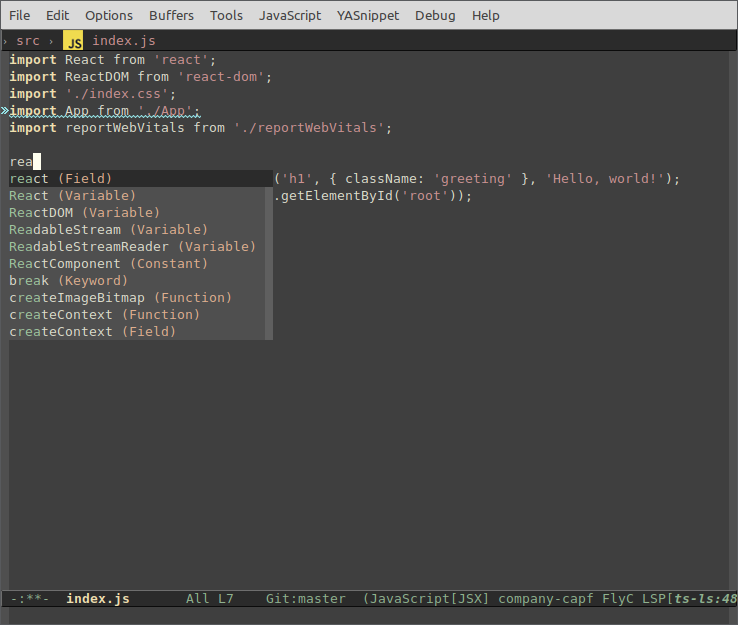In the ever-evolving world of frontend development, few libraries have had as profound an impact on how we approach styling as Styled Components. It burst onto the scene, popularizing the CSS-in-JS paradigm and offering a revolutionary way to build encapsulated, dynamic, and maintainable user interfaces in React. By bringing CSS directly into the component world, it solved long-standing problems like class name collisions, dead code elimination, and the separation of concerns that often felt more like a separation of related technologies. For years, it has been a go-to choice for developers building everything from simple landing pages to complex web applications.
However, the web development landscape is in constant flux. As applications grow in scale and performance expectations become more stringent, the very features that made Styled Components so attractive are now under scrutiny. The convenience of its runtime-based approach comes with a performance cost that can become significant in large-scale projects. This has sparked a critical conversation in the community: is the unparalleled developer experience of Styled Components worth the potential performance trade-off? This article provides a comprehensive technical analysis of Styled Components, exploring its powerful features, dissecting its performance implications, and examining its place among modern styling alternatives.
The Power and Allure of Styled Components
To understand the current discourse, we must first appreciate why Styled Components became a dominant force in the React ecosystem. It wasn’t just another styling library; it was a paradigm shift that offered elegant solutions to common CSS frustrations in a component-based architecture.
Component-Level Encapsulation and Colocation
The core innovation of Styled Components is the colocation of styles with the component logic. Instead of managing separate .css files and grappling with naming conventions like BEM to avoid conflicts, styles are tied directly to the component that uses them. This creates a true building block: a self-contained unit of UI with its own structure, logic, and presentation.
Consider a simple button. In a traditional setup, you might have an HTML Structure in one file and CSS Styling in another. With Styled Components, they live together:
import React from 'react';
import styled from 'styled-components';
// Define a styled HTML element
const StyledButton = styled.button`
background-color: #007bff;
color: white;
padding: 10px 20px;
border: none;
border-radius: 5px;
cursor: pointer;
font-size: 1rem;
&:hover {
background-color: #0056b3;
}
`;
const Button = ({ children }) => {
return <StyledButton>{children}</StyledButton>;
};
export default Button;
This approach enhances maintainability. When you delete a component, you delete its styles. When you need to change a component, everything you need is in one place. The generated unique class names automatically scope the styles, eliminating global namespace pollution entirely.
Dynamic Styling with Props
One of the most powerful HTML5 Features of modern web applications is their interactivity. Styled Components excels at creating dynamic UIs by allowing styles to adapt based on component props. This is far more intuitive than toggling CSS classes with JavaScript.
Let’s extend our button to have a “primary” variant:
const StyledButton = styled.button`
background-color: ${props => (props.primary ? '#007bff' : '#6c757d')};
color: white;
/* ... other styles */
&:hover {
background-color: ${props => (props.primary ? '#0056b3' : '#5a6268')};
}
`;
// Usage:
// <Button primary>Primary Action</Button>
// <Button>Secondary Action</Button>
This pattern is incredibly expressive and aligns perfectly with the React philosophy of a UI being a function of its state and props. It simplifies conditional styling logic and keeps it declarative within the style definition itself.
Effortless Theming and Global Styles
Creating a consistent UI design across a large application is a major challenge. Styled Components provides first-class support for theming via its <ThemeProvider> component. You can define a theme object (with colors, fonts, spacing, etc.) and access it in any styled component within the provider’s scope. This is a cornerstone of building scalable design systems and makes implementing features like a dark/light mode toggle trivial compared to traditional methods.

Combined with createGlobalStyle for injecting base styles (like resets or font-face definitions), it offers a complete toolkit for managing an application’s visual identity from a single source of truth, much like how CSS Variables are used in modern CSS workflows.
The Hidden Cost: A Breakdown of Runtime Performance
The magic of Styled Components doesn’t come for free. Its elegance and developer experience are enabled by a JavaScript runtime that executes in the user’s browser. As applications scale, the cumulative effect of this runtime can become a significant performance bottleneck.
How It Works: The Runtime Mechanism
When a styled component renders for the first time, the library performs several operations in the browser:
- Parsing: It parses the CSS template literal, including interpolating any functions that depend on props.
- Hashing: It generates a unique, stable hash for the styles to identify them.
- Class Name Generation: It creates a unique class name for this specific set of styles.
- Style Injection: It checks if styles for this hash have already been injected. If not, it creates a
<style>tag and injects it into the document’s<head>.
This entire process happens at runtime. For a single component, this is negligible. But for a complex page with hundreds of unique, dynamic styled components, this work adds up, consuming valuable CPU cycles on the main thread during the critical initial page load and subsequent re-renders.
The Impact on Web Vitals
This runtime overhead can negatively affect key performance metrics, particularly Time to Interactive (TTI) and First Contentful Paint (FCP). The JavaScript execution required to process and inject styles can delay the browser from becoming responsive to user input. On low-powered mobile devices, this effect is magnified, leading to a sluggish user experience (UX Design). While React 18’s concurrent features can help mitigate some of this by breaking up long tasks, the fundamental work still needs to be done.
Server-Side Rendering (SSR) Considerations
For applications using Server-Side Rendering, Styled Components introduces another layer of complexity. To avoid a “flash of unstyled content” (FOUC), the server must pre-render the HTML *and* determine the exact CSS needed for that render. This requires a specific setup to create a ServerStyleSheet, collect all the styles during the render pass, and then inject them as a <style> tag into the HTML sent to the client. This is a solvable problem, but it’s an extra step and a potential point of failure that build-time CSS solutions don’t have.
The Evolving Landscape of Web Styling
The conversation around Styled Components’ performance has fueled innovation, leading to a new wave of styling solutions that aim to provide a great developer experience without the runtime cost. The Frontend Web is moving towards more performant patterns.
The Rise of Zero-Runtime CSS-in-JS
Libraries like Linaria, Emotion (with its @emotion/babel-plugin), and Compiled represent the next evolution of CSS-in-JS. They offer a very similar, often identical, API to Styled Components. The key difference is that they do their work at build time.

Instead of shipping a runtime to the browser, a Babel or other build-time plugin scans your code for styled definitions, generates the necessary CSS, and extracts it into static .css files. The original styled component definition is replaced with a simple component that has the static, generated class name. This gives you the best of both worlds: the colocated, component-based developer experience of CSS-in-JS and the raw performance of serving plain CSS files. This approach adheres closely to W3C Standards and Web Standards for delivering performant styles.
The Dominance of Utility-First CSS
On the other end of the spectrum is the explosive popularity of utility-first frameworks, with Tailwind CSS leading the charge. Instead of abstracting styles into component-specific names, Tailwind provides a vast set of low-level utility classes (e.g., flex, pt-4, text-center) that you apply directly in your HTML or JSX.
Styled Components vs. Tailwind CSS: A Philosophical Divide
- Abstraction: Styled Components creates a high-level abstraction (e.g.,
<PrimaryButton>). Tailwind encourages composing low-level utilities directly on standardHTML Elements. - CSS Output: Styled Components generates CSS dynamically at runtime (or with SSR). Tailwind scans your files and generates a single, highly optimized static CSS file containing only the utilities you’ve used.
- Developer Experience: Styled Components keeps you in a JavaScript/CSS mindset. Tailwind keeps you primarily in your markup, applying pre-defined style “recipes.”
Tailwind’s performance is excellent because it results in a static CSS file that is efficiently cached by the browser. Its Just-in-Time (JIT) compiler ensures the final stylesheet is incredibly small.
The Resurgence of Modern Native CSS
Simultaneously, CSS itself has become vastly more powerful. Features that once required JavaScript or complex CSS Preprocessors like SASS or LESS are now native. CSS Variables (Custom Properties) provide a powerful, runtime-accessible way to manage design tokens for theming, directly competing with Styled Components’ ThemeProvider. CSS Grid and CSS Flexbox have revolutionized Web Layout and Page Layout, making complex responsive designs achievable with pure CSS. The need for JavaScript to handle dynamic styling is shrinking as CSS becomes more capable.
A Pragmatic Guide: Choosing Your Styling Strategy

There is no single “best” way to style a web application. The right choice depends on your project’s scale, performance requirements, and team preferences. Here are some actionable insights to guide your decision.
When Styled Components Still Shines
- Rapid Prototyping and Small-to-Medium Projects: For projects where developer velocity is the top priority and absolute peak performance is not a critical constraint, the DX of Styled Components is hard to beat.
- Highly Dynamic UIs: If your application’s styling is heavily dependent on complex, real-time application state, the prop-based styling of Styled Components is incredibly elegant and powerful.
- Teams Deeply Invested in the CSS-in-JS Ecosystem: For teams already comfortable with the paradigm, it remains a productive and viable choice.
Best Practices for Optimizing Styled Components
If you choose to use Styled Components, you can mitigate some of its performance costs by following these HTML Best Practices and CSS Tips:
- Use the Babel Plugin: The
babel-plugin-styled-componentsprovides benefits like cleaner class names, server-side rendering compatibility, and minification. - Avoid Creating Components in the Render Method: Defining a styled component inside another component’s render function will cause it to be recreated on every render, destroying performance. Always define them at the top level of the module.
- Leverage
.attrs: For HTML attributes that don’t change often, use the.attrsconstructor to avoid re-calculating them on every render.
When to Consider Alternatives
- Large-Scale, Performance-Critical Applications: For applications where every millisecond counts (e.g., e-commerce, content-heavy sites), a zero-runtime or utility-first solution is likely a better choice.
- Static Sites: For sites built with frameworks like Next.js or Gatsby, leveraging a build-time solution that outputs static CSS files is far more efficient.
- Design System Libraries: When building a reusable component library intended for wide distribution, avoiding a specific CSS-in-JS runtime dependency can make the library more versatile and performant for consumers.
Conclusion: A New Era of Conscious Styling Choices
Styled Components remains a landmark library that fundamentally improved the developer experience of styling in the component era. Its intuitive API for creating encapsulated, dynamic, and themeable components set a new standard for Frontend Development. However, the web has evolved. The performance implications of its runtime-first approach are now a critical consideration, especially as powerful alternatives have emerged.
The modern developer is faced with a rich spectrum of choices, from the build-time performance of zero-runtime CSS-in-JS libraries like Linaria, to the utility-first efficiency of Tailwind CSS, to the ever-growing power of native, Modern CSS. The key takeaway is that styling is no longer a one-size-fits-all decision. We must consciously weigh the trade-offs between developer experience, runtime performance, bundle size, and maintainability. Styled Components is still a fantastic tool in the toolbox, but it’s crucial to understand when to use it and when a different tool might be better for the job.




